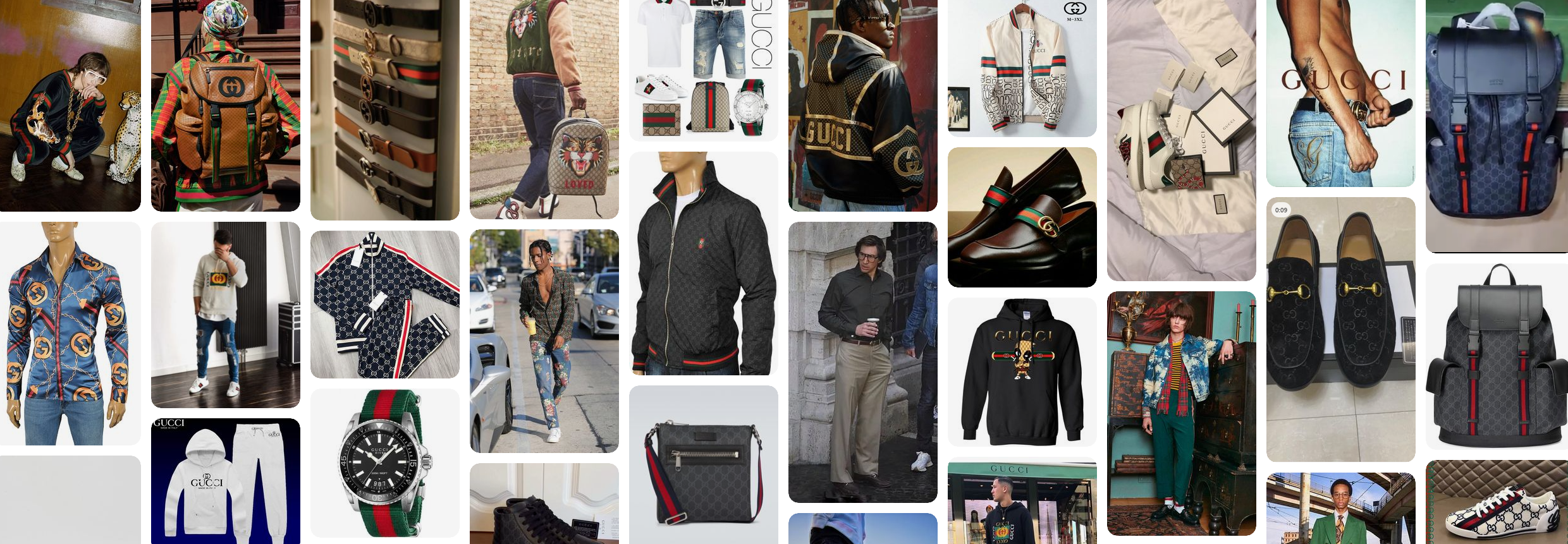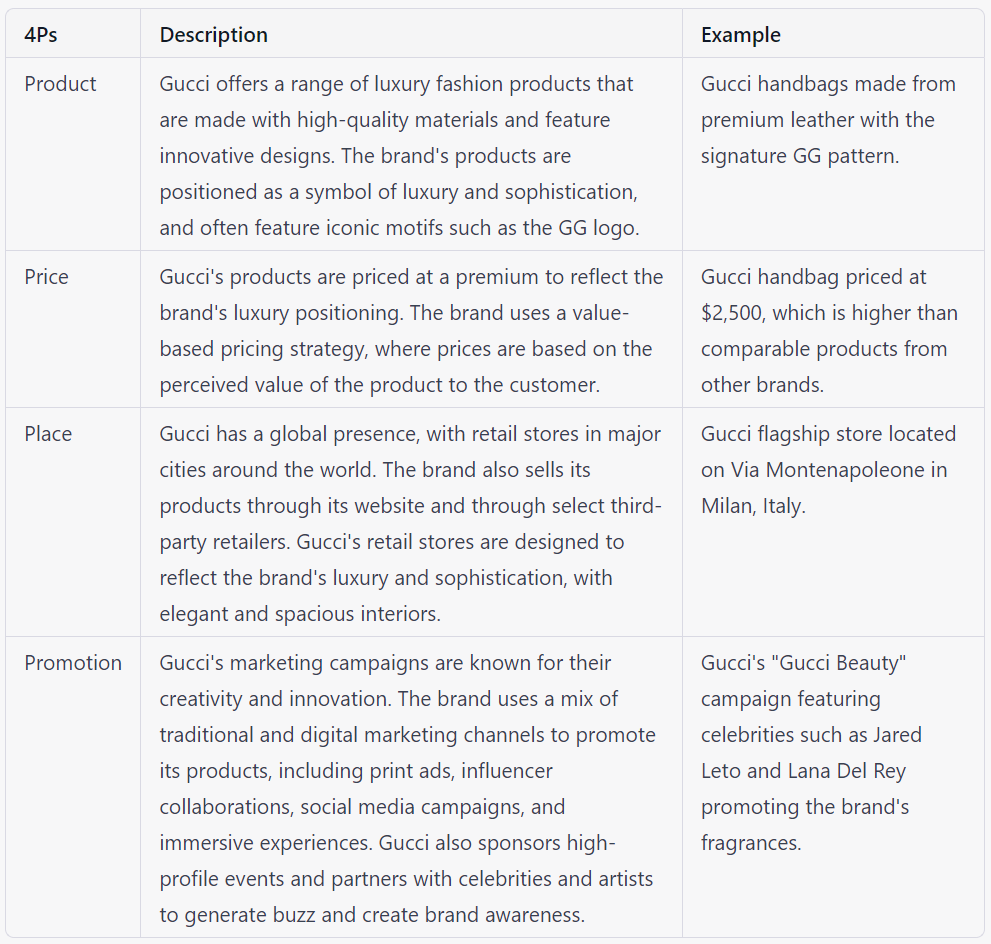How Does Gucci Do It: Unpacking the Brand’s Strategies for Success
Gucci is one of the world’s leading fashion brands, but how do they remain at the top? In this blog, we will unpack their strategies for success and analyze what makes them a global leader in the fashion industry. From their modern branding techniques to their innovative designs, we will explore the key elements that have enabled Gucci to remain a fashion powerhouse. With a closer look at their marketing tactics, we can uncover the secrets behind their success.
1. Introduction
Gucci is one of the most successful luxury brands in the world. How does it do it? Through a combination of carefully crafted and consistent branding strategies. Gucci has established itself as a leader in the luxury market by offering high-quality products, staying true to its core values, and embracing the power of digital marketing. Gucci’s success can be attributed to its focus on creating a strong brand identity, creating a unique customer experience, and investing in digital marketing. Through these strategies, Gucci has been able to create a strong, positive image that resonates with customers around the world. By creating a unique and recognizable brand identity, Gucci has been able to stand out in the crowded luxury market and create a loyal following. By offering a unique customer experience, Gucci has been able to create a strong bond with its customers. Finally, by investing in digital marketing, Gucci has been able to reach more people, increase brand awareness, and drive sales. Gucci’s success is a testament to the power of a well-executed branding strategy.

2. What Makes Gucci So Successful?
Gucci’s success is no accident. Its success is due to the brand’s unique strategies, which have propelled it to become one of the world’s most recognizable luxury fashion labels. Gucci has created a unique and unmistakable brand identity that stands out from the competition. Gucci’s success is also due to its effective marketing campaigns, which have consistently focused on creating an aspirational lifestyle for its customers. Gucci has also invested heavily in digital marketing and has utilized social media to reach a larger and more diverse audience. Additionally, the company has been able to create partnerships with a number of influential celebrities and influencers, which has helped to boost the brand’s visibility and reputation. Finally, Gucci has also been able to build a loyal customer base and has consistently provided exceptional customer service, which has contributed to the brand’s success. With all of these strategies, it’s no wonder why Gucci has become a powerhouse in the luxury fashion industry.
3. Examining the Brand’s Unique Strategies
It is easy to see why Gucci has been so successful in its brand strategies. The company has a clear understanding of who it is and what it stands for. It utilizes a combination of traditional and modern marketing methods, such as the effective use of social media, to reach its target customers. Furthermore, Gucci has consistently delivered luxury products with a focus on quality, craftsmanship, and attention to detail. These strategies have enabled Gucci to stay ahead of the competition and maintain its position as a leader in luxury fashion. As the brand continues to evolve, it is clear that its strategies for success will remain firmly rooted in the same principles that have made Gucci so successful.

Table: 4Ps of Gucci Marketing Strategy
4. Understanding Gucci’s Use of Social Media and Influencers
Gucci has become a master of the influencer game, but how do they do it? The brand has developed an effective strategy for using social media and influencers to promote their products and build their brand. Gucci has tapped into the power of influencers to reach a wider audience and create buzz around their products. They use influencers to create content that resonates with their target audience, amplifying the reach of their message. They also use influencers to showcase the latest trends in fashion and create a sense of exclusivity. Additionally, Gucci partners with celebrities and prominent figures to create content that appeals to their target demographic. By leveraging the influence of these influencers, Gucci has been able to drive sales and create a loyal customer base. Gucci’s approach to social media and influencer marketing has been so effective that it has become a model for other brands to follow.
5. Exploring the Impact of Gucci’s Creative Collaborations
Gucci’s success is no accident. Through strategic partnerships with renowned artists, fashion designers, and influencers, Gucci has been able to tap into fresh, innovative ideas and create truly unique products. Through its mix of traditional and contemporary approaches to fashion, Gucci has been able to remain relevant and popular with both the old and new generations. The brand’s partnership with renowned fashion house Balmain was an especially fruitful collaboration, resulting in a hybrid of high-end fashion and street style that was hugely popular with the masses. Gucci has also been smart in collaborating with Instagram influencers and celebrities, using them as walking billboards for their products. By combining traditional marketing techniques with modern technology, Gucci has been able to reach a wider audience and create a buzz about their products. Gucci’s creative collaborations are an important part of their success, and it’s no surprise that the brand is still going strong today.
6. Analyzing How Gucci Markets Its Products
Gucci has managed to establish itself as one of the most recognizable luxury brands in the world, thanks in no small part to its innovative marketing strategies. Its campaigns are carefully crafted to emphasize the quality and craftsmanship of its products, as well as to showcase the brand’s commitment to a modern, luxury lifestyle. Gucci also does an excellent job of targeting specific demographics, such as millennials, and creating unique partnerships that appeal to those audiences. Gucci’s creative use of digital marketing has also been highly successful, with its ads appearing in a variety of platforms, from traditional media outlets to social media. By leveraging its long-standing commitment to quality and craftsmanship, and its ability to create unique partnerships and campaigns, Gucci has become a fashion powerhouse that is sure to remain a leader in the luxury market for years to come.
7. Evolution of Marketing of Gucci
Gucci has a long history of innovative and iconic marketing campaigns. Here are some of the key milestones in the evolution of Gucci’s marketing:
- Early Years (1920s – 1950s): Gucci started as a small leather goods company in Florence, Italy. The brand’s initial marketing strategy was focused on creating high-quality, handmade leather goods and relying on word-of-mouth to build its reputation. In the 1950s, Gucci began to expand its product range to include clothing and accessories, and it started to promote itself as a luxury lifestyle brand.
- The Iconic Logo (1960s – 1970s): In the 1960s, Gucci’s creative director, Aldo Gucci, created the brand’s now-iconic double G logo. This logo became a symbol of luxury and sophistication, and it was prominently featured in the brand’s marketing campaigns. Gucci also started to expand its presence globally, opening stores in New York and Tokyo.
- The Tom Ford Era (1990s – 2000s): In the 1990s, Gucci underwent a major transformation under the leadership of creative director Tom Ford. Ford introduced a more modern and provocative aesthetic, and he created some of the brand’s most memorable campaigns, such as the controversial “Gucci G-String” ads. Ford also expanded Gucci’s product range to include fragrances and eyewear, and he opened new stores in cities such as Paris and London.
- Digital Age (2010s – present): In recent years, Gucci has embraced digital marketing and social media. The brand has collaborated with popular Instagram influencers and created viral campaigns, such as the “GucciGram” project, which invited artists to reimagine the brand’s iconic motifs. Gucci has also used augmented reality and virtual reality technology to create immersive experiences for customers.
Overall, Gucci’s marketing campaigns have evolved over the years to reflect changes in fashion and culture. However, the brand has always maintained a commitment to luxury, quality, and innovation, which have been key to its success.
8. Notable Historic Marketing Campaigns of Gucci
Gucci has a rich history of memorable and innovative marketing campaigns. Here are some of the key historic campaigns that helped to establish Gucci as a leading fashion brand:
- The Jackie Bag (1950s): In the 1950s, Gucci introduced the Jackie bag, which was named after Jackie Kennedy Onassis, who was often seen carrying the bag. Gucci leveraged this celebrity endorsement to promote the bag, and it became an instant classic. The Jackie bag was promoted through magazine ads featuring glamorous models and actresses.
- The Gucci Loafer (1960s): In the 1960s, Gucci introduced the iconic Gucci loafer, which became a symbol of luxury and sophistication. To promote the loafer, Gucci created print ads featuring the shoe paired with elegant outfits and accessories. The loafer was also promoted through window displays and in-store promotions.
- The Double G Logo (1970s): In the 1970s, Gucci’s creative director Aldo Gucci created the now-iconic double G logo. The logo was featured prominently in print ads, and it became a symbol of luxury and status. Gucci also introduced the GG canvas, a fabric featuring the double G logo, which was used in many of its products.
- Tom Ford’s Controversial Campaigns (1990s – 2000s): In the 1990s and 2000s, Gucci underwent a major transformation under the leadership of creative director Tom Ford. Ford’s provocative campaigns, such as the “Gucci G-String” ads featuring a model wearing only a thong and a pair of Gucci heels, generated controversy but also helped to establish Gucci as a cutting-edge brand.
- The Gucci Flora Scarf (2005): To celebrate the 40th anniversary of the iconic Flora print, Gucci launched a new campaign featuring the Flora scarf. The campaign featured a series of black and white photographs of women wearing the scarf, which was promoted as a versatile and timeless accessory.
Overall, Gucci’s historic marketing campaigns have been instrumental in establishing the brand as a symbol of luxury, sophistication, and style. These campaigns have leveraged celebrity endorsements, provocative imagery, and iconic designs to create a lasting impression in the minds of consumers.
9. Conclusion
Gucci has long been a leader in the fashion industry, and there is no doubt that their success is due to their well-crafted strategies. From their unique marketing approach to their innovative product design, their devotion to quality and attention to detail, the brand has created a winning formula that consumers can’t resist. Gucci has also been able to capitalize on their prestigious reputation, creating a synergy between their products, their customers, and their brand image. With a combination of smart marketing, creative design, and a commitment to excellence, Gucci continues to be a pioneer of the fashion industry and an inspiration to others.
10. How to Use AI and Software Tools To Build a Brand like Gucci
EpiProdux.com is a product management tool that can help build a strong brand like Gucci in several ways:
- Streamlining Product Management: EpiProdux.com can help managers streamline its product management processes, from ideation to launch. The tool provides a centralized platform for managing product data, allowing teams to collaborate more effectively and make better-informed decisions.
- Tracking Product Performance: EpiProdux.com provides real-time data on product performance, including sales, inventory levels, and customer feedback. This information can help Gucci identify which products are performing well and which ones need improvement, enabling the brand to make data-driven decisions and optimize its product portfolio.
- Collaboration and Communication: EpiProdux.com allows different teams within Gucci to collaborate and communicate more effectively. This can help ensure that all stakeholders are aligned on product goals and timelines and that everyone is working towards a common vision for the brand.
- Consumer Insights: EpiProdux.com provides valuable consumer insights, such as customer preferences, feedback, and purchasing behavior. These insights can help Gucci better understand its target audience and create products that meet their needs and expectations.
- Optimization of Product Development: EpiProdux.com can help Gucci optimize its product development process by providing data on product costs, timelines, and resource allocation. This information can help the brand identify areas where it can reduce costs and streamline production, while still maintaining product quality and brand standards.
Overall, EpiProdux.com can help Gucci build a strong brand by enabling the brand to create and launch high-quality products that meet the needs of its target audience. By leveraging real-time data and streamlined processes, Gucci can stay ahead of the competition and maintain its position as a leader in the luxury fashion industry.


